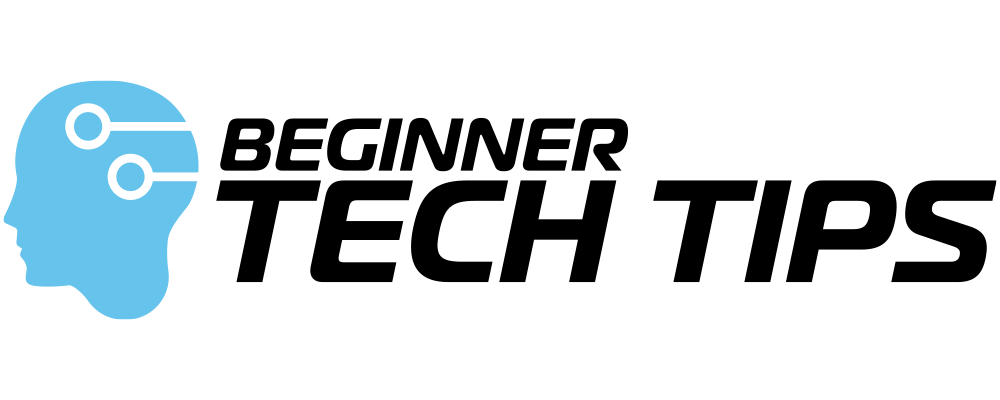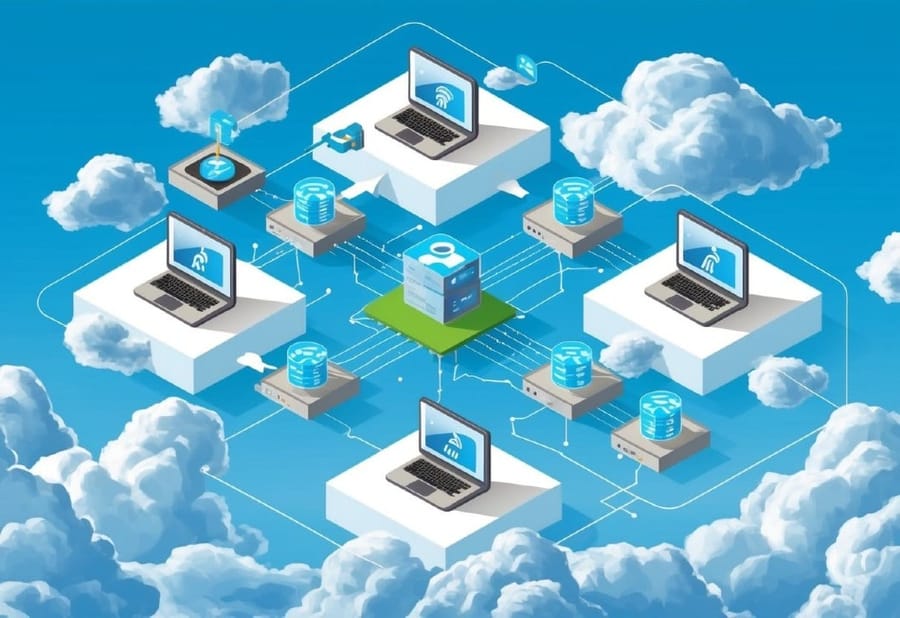Cloud computing has changed the way you work, store data, and run your business. Think of it like having a super-powered computer that lives on the internet instead of your desk. You can access all your files, apps, and tools from anywhere with an internet connection.
Cloud computing gives you five main features: on-demand self-service, broad network access, resource pooling, quick scaling, and pay-as-you-go billing. This means you can get exactly what you need when you need it without waiting for someone else to set it up. Your data stays safe with built-in security measures, and you only pay for what you actually use.
You might wonder how this helps in real life. Picture this: You're working on a big project and suddenly need more storage space or computing power. Instead of buying new hardware, you can add more resources with just a few clicks. This flexibility makes cloud computing perfect for businesses of any size, from tiny startups to huge corporations.
Essential Characteristics

Cloud computing has five key traits that make it different from regular IT services. These traits work together to give you flexibility, cost savings, and better ways to use computing resources.
On-Demand Self-Service
You can get the computing power you need without asking anyone for help. It's like having a self-service gas station for your IT needs.
You control everything through simple online panels. Need more storage? Just click a button. Want to start a new server? You can do it right away.
The system takes care of your requests automatically. No phone calls, no waiting for approvals, and no dealing with IT staff.
Broad Network Access
You can reach your cloud services from anywhere with an internet connection. Your phone, tablet, laptop - they all work just fine.
The cloud doesn't care what device you're using. You get the same great service whether you're at home, in the office, or traveling.
All the important security features work across every device, too. You won't lose any functions when switching between devices.
Resource Pooling
Your cloud provider shares their big pool of computing resources with many users at once. Think of it like an apartment building - everyone gets their own space, but the building serves many people.
The system moves resources around automatically based on who needs what. You might be using a server in Texas one minute and California the next.
You don't need to worry about where your data is stored. The cloud handles all that for you while keeping your information private.
Rapid Elasticity
Your cloud resources can grow or shrink super fast. When you need more power, you get it right away.
If your website suddenly gets popular, the cloud adds more servers automatically. When traffic drops, it scales back down to save you money.
This automatic scaling happens in minutes, not days or weeks. You never pay for more than you need.
Measured Service
The cloud tracks everything you use, just like a utility company. You can see exactly how much storage, processing power, and bandwidth you're using.
Pricing is clear and simple. You pay only for what you actually use, no more guessing about IT costs.
You get detailed reports about your usage. These help you plan better and control your spending.
Service Models
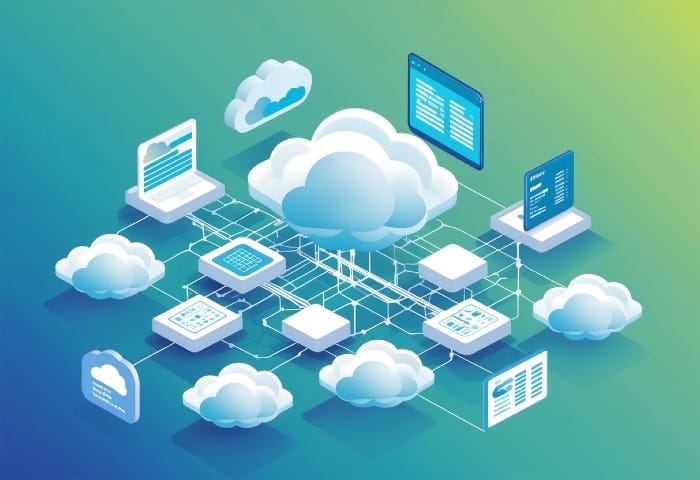
Cloud services come in three main types that give you different levels of control and features. Each model handles a specific part of your computing needs, from ready-to-use software to complete infrastructure management.
Software as a Service (SaaS)
SaaS gives you instant access to ready-made applications through your web browser. You don't need to install or update anything - it's all done for you.
Think of apps like Gmail or Microsoft 365. You just log in and start using them right away.
The provider takes care of everything: servers, updates, security, and storage. You only need to manage your data and user settings.
Many SaaS apps work on any device with internet access. This makes them perfect for teams working from different locations.
Infrastructure as a Service (IaaS)
IaaS lets you rent basic computing resources like servers, storage, and networks. You get to build your IT setup without buying physical hardware.
You control the operating systems, applications, and security tools. The provider only maintains the physical equipment.
Popular examples include Amazon EC2 and Microsoft Azure Virtual Machines.
This model works great when you need lots of flexibility but don't want to buy and maintain physical servers.
Platform as a Service (PaaS)
PaaS gives you a complete platform for building and running your own applications. The provider handles servers, storage, and networking so you can focus on coding.
You get tools and services that make app development faster and easier. Think databases, development frameworks, and testing tools.
Common PaaS options include Google App Engine and Heroku.
This setup works best for developers who want to create apps without managing complex infrastructure.
Deployment Models
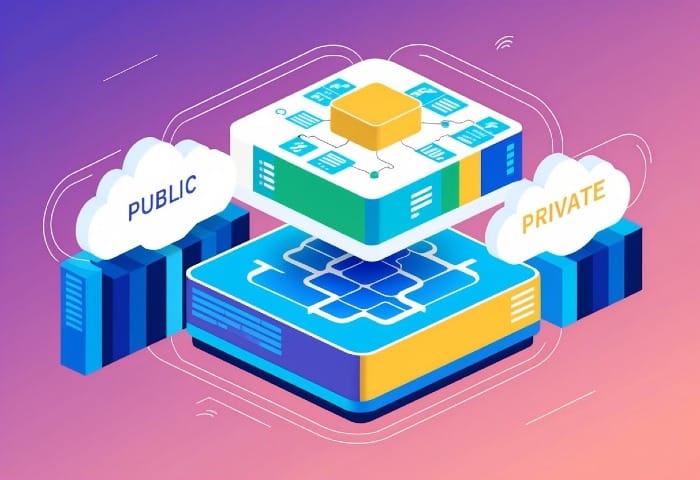
Cloud deployment models define how you access and use cloud resources. Each model offers different levels of control, cost structures, and security options.
Private Cloud
A private cloud gives you exclusive access to a dedicated cloud infrastructure. You manage and control everything in-house or through a third-party provider.
Private clouds offer strong security since you're the only user. You can customize every aspect of your setup to match your exact needs.
The infrastructure stays behind your firewall, giving you tight control over sensitive data and compliance requirements.
Setting up a private cloud costs more than other options. You need to buy and maintain all the hardware and software yourself.
Public Cloud
Public clouds let you rent computing power from providers like Amazon AWS, Microsoft Azure, or Google Cloud. You share the infrastructure with other customers.
You only pay for what you use, making public clouds very cost-effective. The provider handles all maintenance and updates.
Public clouds scale quickly when you need more resources. You can add or remove capacity in minutes.
Security depends on the provider's systems and your own settings. Your data travels over the public internet.
Hybrid Cloud
Hybrid clouds combine private and public cloud resources. You keep sensitive operations in your private cloud while using public clouds for other tasks.
You can move workloads between private and public clouds as needed. This gives you the flexibility to handle changing demands.
Many companies use hybrid clouds to balance security and cost. Critical systems stay private, while less sensitive work uses public resources.
Setting up hybrid clouds takes careful planning. You need to manage connections between different systems and keep everything working together.
Technology Innovations

Cloud computing brings powerful new tools that transform how you work with data and systems. Modern innovations make your tech operations faster, smarter, and more efficient.
Virtualization and Automation
Virtualization lets you run multiple systems on a single machine. You can create virtual servers, storage, and networks with just a few clicks.
Cloud automation handles repetitive tasks for you. It can set up new servers, install software, and manage backups without manual work.
Your IT team can focus on important projects instead of routine maintenance. Resource scaling happens automatically based on your needs.
Smart monitoring tools watch your systems 24/7. They can spot and fix problems before you even notice them.
AI and Machine Learning
AI-powered cloud services analyze your data to find useful patterns. You get actionable insights without needing a data science degree.
Your apps become smarter with built-in machine learning features. Things like image recognition, text analysis, and prediction models are easy to add.
Cloud platforms offer pre-trained AI models. You can use them right away for tasks like customer service chatbots or demand forecasting.
Real-time analytics help you make better decisions. Your systems learn from experience and get more accurate over time.
Economic and Security Considerations
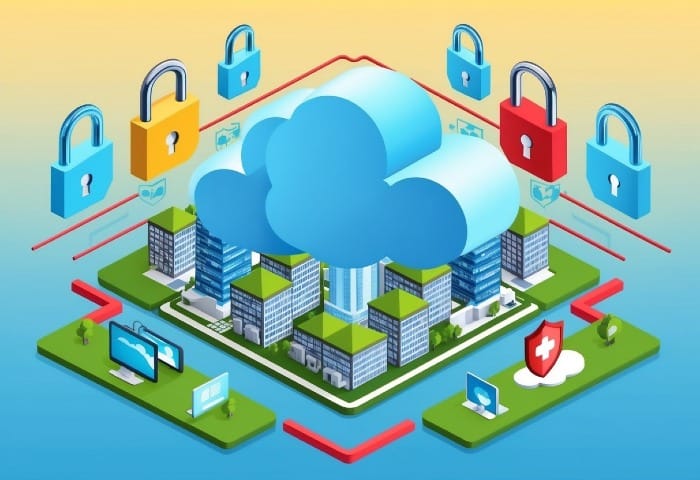
Cloud computing brings major changes to how you manage costs and protect your data. Smart financial choices and strong security measures are key to success in the cloud.
Conclusion
Cloud computing has changed the way you work with technology. It lets you access computing power, storage, and software through the internet instead of your local computer.
You can scale resources up or down as needed, making it easy to match your exact needs. No more paying for extra capacity you don't use.
The pay-as-you-go model saves money since you only pay for what you actually use. Plus, you can access your data and applications from anywhere with an internet connection.
Cloud providers handle maintenance, updates, and security. This frees up your time to focus on using the services rather than managing infrastructure.
Whether you're a small business or a large enterprise, cloud computing offers flexibility and efficiency. The technology keeps improving with new features and capabilities being added regularly.
Your data stays protected through advanced security measures, and automatic backups keep it safe. Cloud computing will keep growing as more businesses move their operations online.
